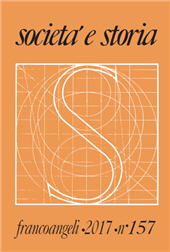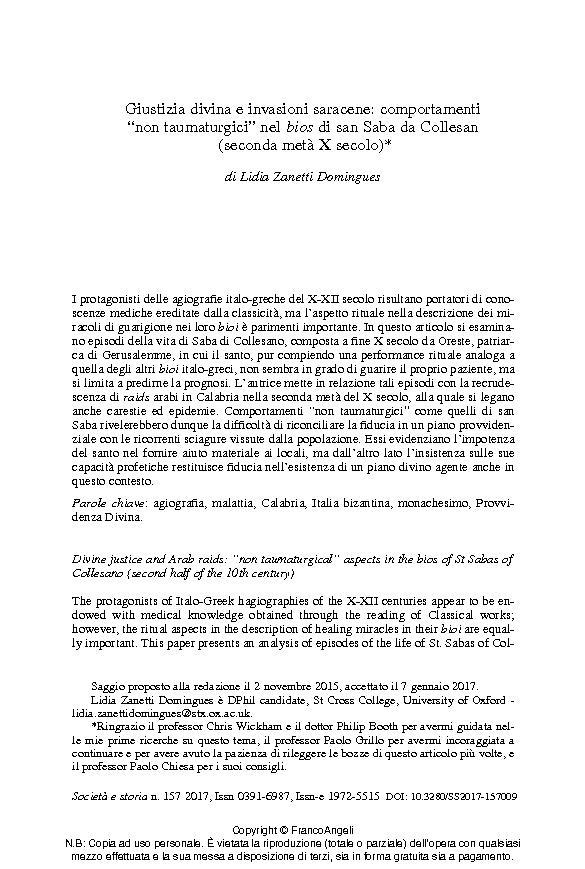Giustizia divina e invasioni saracene : comportamenti non taumaturgici nel bios di san Saba da Collesan (seconda metà X secolo)
581-606 p.
I protagonisti delle agiografie italo-greche del X-XII secolo risultano portatori di conoscenze mediche ereditate dalla classicità, ma l'aspetto rituale nella descrizione dei miracoli di guarigione nei loro bioi è parimenti importante. In questo articolo si esaminano episodi della vita di Saba di Collesano, composta a fine X secolo da Oreste, patriarca di Gerusalemme, in cui il santo, pur compiendo una performance rituale analoga a quella degli altri bioi italo-greci, non sembra in grado di guarire il proprio paziente, ma si limita a predirne la prognosi. L'autrice mette in relazione tali episodi con la recrudescenza di raids arabi in Calabria nella seconda metà del X secolo, alla quale si legano anche carestie ed epidemie. Comportamenti "non taumaturgici" come quelli di san Saba rivelerebbero dunque la difficoltà di riconciliare la fiducia in un piano provvidenziale con le ricorrenti sciagure vissute dalla popolazione. Essi evidenziano l'impotenza del santo nel fornire aiuto materiale ai locali, ma dall'altr
o lato l'insistenza sulle sue capacità profetiche restituisce fiducia nell'esistenza di un piano divino agente anche in questo contesto. [Testo dell'editore].
The protagonists of Italo-Greek hagiographies of the X-XII centuries appear to be endowed with medical knowledge obtained through the reading of Classical works; however, the ritual aspects in the description of healing miracles in their bioi are equally important. This paper presents an analysis of episodes of the life of St. Sabas of Collesano, written at the end of the X century by Orestes, patriarch of Jerusalem, where the saint performs healing rituals comparable to those of the other Italo-Greek bioi, except that he does not seem able to heal his patients and limits himself to predicting their prognosis. The author links such episodes to the new wave of Arab raids in Calabria in the second half of the X century, with its aftermath of famines and epidemics. "Non thaumaturgical" behaviour such as that of St Sabas could therefore reveal the difficulty of reconciling the faith in a providential plan with the recurrent misfortunes experienced by the population. It highlights the helplessness of the saint in.
providing the locals with material help, while on the other hand the emphasis on his prophetical skills re-establishes faith in a divine plan operating even in these circumstances. [Publishers' text].
Ist Teil von
Società e storia : 157, 3, 2017-
Artikel aus derselben Ausgabe (einzeln erhältlich)
-
Informationen
ISSN: 1972-5515
THEMENBEREICHE



